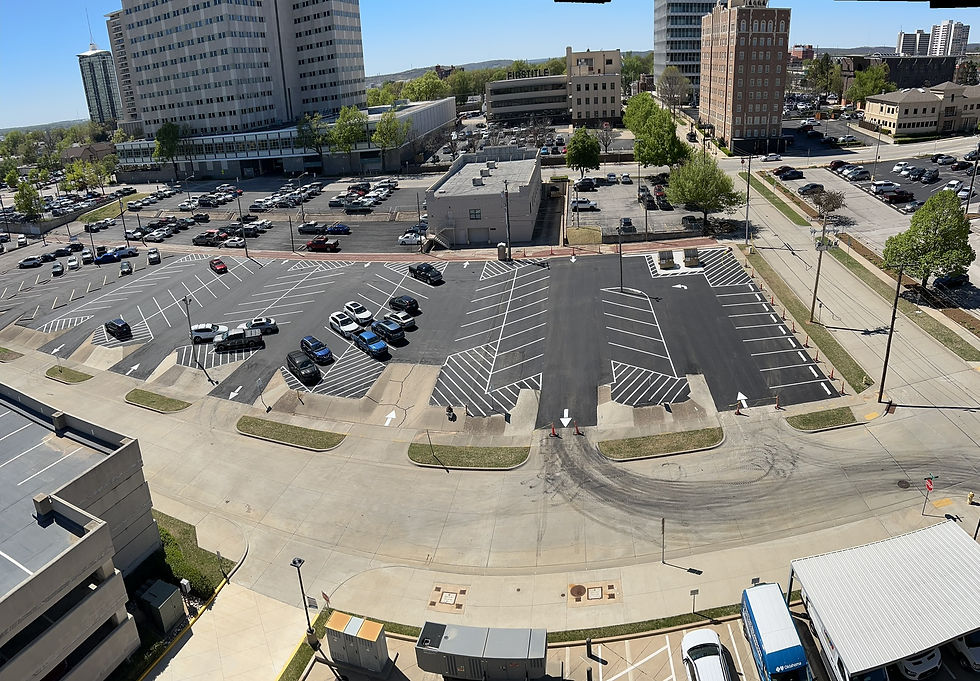Asphalt vs. Rock: What’s the Real Difference?
- seo5706
- Jul 22
- 3 min read

Many people refer to asphalt as “blacktop” or even “tar and rocks,” which leads to a common question: is asphalt a rock? While it might seem like a simple comparison, asphalt and rock are not the same thing. Understanding the distinction between them helps clarify how roads are built and why professional pavement maintenance is so important.
At Ellsworth Pavement Maintenance, we aim to educate our clients about the materials we work with every day. Here’s a clear breakdown of how asphalt differs from rock and why the difference matters for your pavement surfaces.
What Is Rock?
In the context of road construction, “rock” typically refers to natural aggregate materials such as gravel, crushed stone, or sand. These materials are mined from quarries and riverbeds, then screened and sized for different uses. Rock is a critical ingredient in many types of construction projects, providing foundational support for buildings, sidewalks, and, of course, roads.
Crushed rock forms the base layer for most paved surfaces. Its purpose is to create a stable foundation that drains water and distributes weight. On its own, however, rock is loose and lacks the cohesion needed for a finished driving surface.
What Is Asphalt?
Asphalt is a manufactured material created by combining aggregates (such as crushed rock) with a petroleum-based binder called bitumen. The result is a cohesive, flexible paving material used to surface roads, driveways, parking lots, and more. Unlike loose rock, asphalt holds together as a continuous surface that can be compacted and smoothed.
To understand the full list of materials in asphalt, read our article on the ingredients that make asphalt last.
Key Differences Between Asphalt and Rock
1. Composition
Rock is a naturally occurring material.
Asphalt is a man-made product created by mixing rock with bitumen.
2. Use in Construction
Rock is used in base layers or for drainage applications.
Asphalt is used as a finished surface that vehicles can drive on.
3. Durability and Performance
Loose rock shifts over time, making it unsuitable for high-traffic surfaces.
Asphalt provides a smooth, weather-resistant, and long-lasting surface when properly maintained.
Why the Confusion Exists
The confusion between asphalt and rock stems from the fact that asphalt contains rock. In fact, the majority of the asphalt mixture—up to 95 percent—is made up of aggregates. The remaining portion is the bitumen that binds it all together.
So while asphalt contains rock, it is more accurate to think of it as a composite material rather than just rocks poured onto a road. This distinction is important when considering how to care for your pavement or choose the right material for a construction project.
Why It Matters for Maintenance
Knowing the difference between asphalt and rock helps property owners make better decisions about pavement upkeep. For example, potholes may expose the rock base below, but patching the asphalt surface requires more than just filling it with gravel. It involves using the correct asphalt mix and applying it at the right temperature to create a strong bond.
At Ellsworth Pavement Maintenance, we inspect your pavement to understand what lies beneath the surface. We use this information to recommend the most effective repair strategies and materials for long-term performance.
Looking to Repair or Replace Your Asphalt?
Our team offers everything from minor patching to full resurfacing. View our pavement services to find the solution that fits your needs. Have questions about the condition of your asphalt? Schedule a consultation with one of our experienced technicians today.
Want to learn more about how asphalt holds up over time? Check out our blog for educational articles, industry tips, and real-world project insights.


